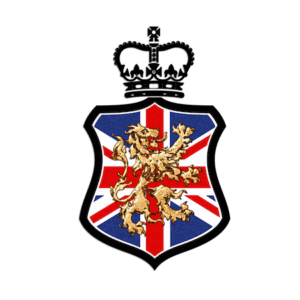Long before the Lord of the Rings and Hobbit trilogies were a glimmer in Peter Jackson’s eye, animation studio Rankin/Bass had a crack at adapting the works of J.R.R. Tolkien. Rankin/Bass Animated Entertainment was founded by Arthur Rankin Jr. and Jules Bass in 1960 as Videocraft International. Most people are familiar with numerous animated Christmas specials the studio produced, from Rudolph the Red-Nosed Reindeer to Frosty the Snowman. In 1977, the studio produced its animated adaptation of The Hobbit and followed it up in 1980 with The Return of the King. If you want to learn some interesting facts about these films that came decades before their live-action counterparts, read on and enjoy.
One-in-Three
While Rankin/Bass sought to make the LOTR after they’d done The Hobbit, the duo, unfortunately, didn’t have the licensing rights. Instead, those rights were held by Saul Zaentz, the producer behind Ralph Bakshi’s Lord of the Rings animated adaptation in 1978. Bakshi’s version didn’t fare so well since it was incomplete, and Rankin/Bass’s Return of the King didn’t do much better. Ultimately, audiences wanted a complete telling of the story, which they wouldn’t get until Jackson’s films.
Original Music, but Not Original Lyrics
Songs as they appear in The Hobbit (with the exception of “The Greatest Adventure”) have their lyrics taken directly from Tolkien’s book with original melodies crafted for them.
Talking to Himself
Orson Bean was cast as Bilbo for the 1977 Hobbit adaptation and then played both Bilbo and Frodo for The Return of the King. The late Sir Ian Holm came close to replicating this feat (after a sort), having played Frodo in a BBC radio adaptation of The Lord of the Rings and then being cast as Bilbo for live-action films.
Across the Sands of Time
Orson Bean and Ian Holm aren’t the only actors in both adaptations linked by their characters. John Huston played Sherlock Holmes in the TV movie Sherlock Holmes in New York, while Ian McKellan played him in Mr. Holmes, and Benedict Cumberbatch played the role in the Sherlock TV series. Cumberbatch was also joined by Martin Freeman as John Watson in that show.
Are We Missing Anyone?
Interestingly, two major characters from the Lord of the Rings franchise are nowhere to be found in The Return of the King. Despite their fathers, Gloin and Thranduil, appearing in the animated version of The Hobbit, neither Gimli nor Legolas appears in the animated Return of the King film.
Second Verse, Same as the First
Well, not quite. One thing that the animated and live-action versions of The Hobbit have in common is that both only adapt the first version of “Far O’er the Misty Mountains Cold”. Anyone who’s read the books knows that there are ten verses in total, and the dwarves sing them all, though the filmmakers in both cases decided that might take up too much time.
Celebrity Voice Actors
Long before it was common in animated films, the Rankin/Bass adaptations of The Hobbit and The Return of the King boasted some impressive names amongst the casts. Han Conreid (Captain Hook in Disney’s Peter Pan) provided the voice of Thorin Oakenshield, John Huston (director of The African Queen) played Gandalf, Casey Kasem (Scooby-Doo) was Merry, and Roddy McDowall (Planet of the Apes) played Samwise Gamgee.
Death by Adaptation
In the animated Hobbit, Gandalf says that seven of the dwarves died in the Battle of the Five Armies. In the books, only three were lost: Thorin, Fili, and Kili.
I Thought You’d Be Taller
Elves as depicted in the animated Hobbit, are much different physically than in the books and live-action films. Instead of being slender and beautiful, they’re not much bigger than the hobbits and have a grey skin tone.
One-Off
When The Hobbit was made, Rankin/Bass had no plans to adapt any of the Lord of the Rings books. As such, the One Ring’s sole characteristic is to turn Bilbo invisible, and no allusion is made to its more devious origins and purpose.





